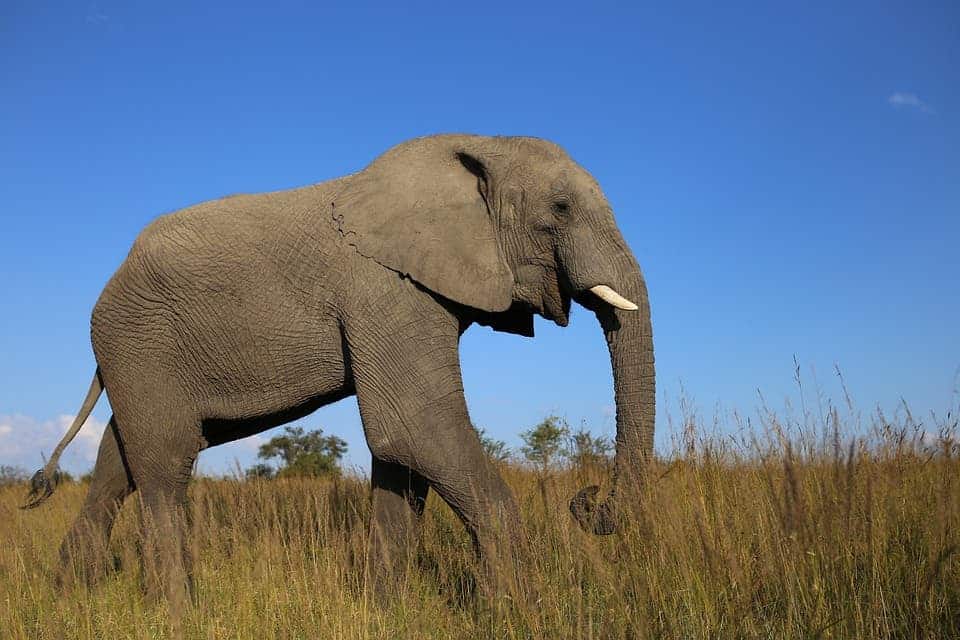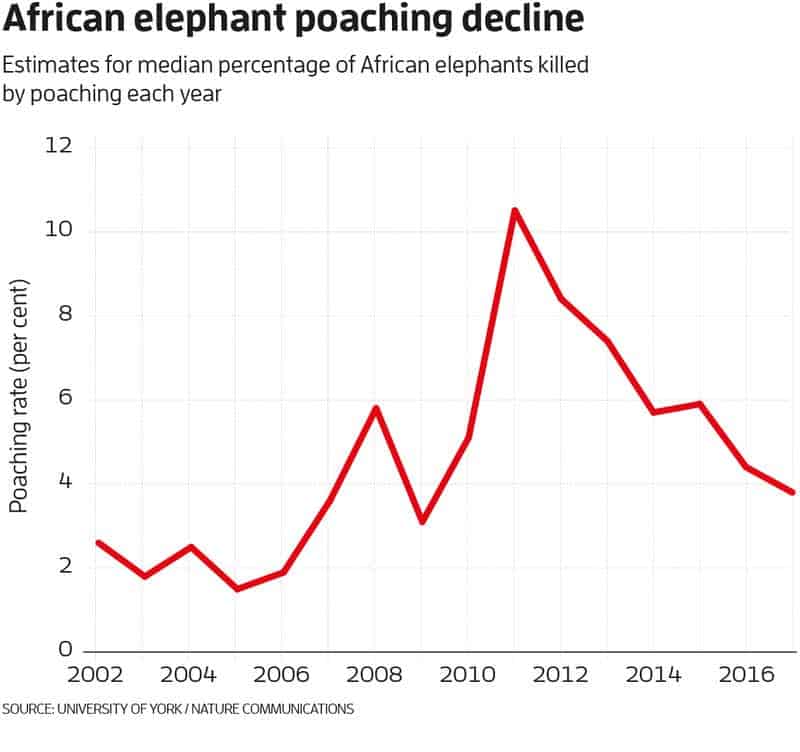A new study has found reasons to be cautiously optimistic about the future of elephants: while poaching is still too high, it has more than halved since 2011.

The rise of the ivory black market — especially the one in China and Southeast Asia — spelled very bad news for elephants. Every year, up to 10% of the entire population was killed by poachers, with peak poaching being reached in 2011. Now, a new survey found that poaching rates are down to 4% in 2017 — which, while much lower, is still very dangerous for elephant population.
One of the authors of the study, Dr. Colin Beale, from the University of York’s Department of Biology said:
“We are seeing a downturn in poaching, which is obviously positive news, but it is still above what we think is sustainable so the elephant populations are declining.”
“The poaching rates seem to respond primarily to ivory prices in South- East Asia and we can’t hope to succeed without tackling demand in that region.”

This increased awareness made a significant impact, researchers say, culminating with an ivory trade ban introduced in China in 2017, but this study did not assess the impact this ban had on poaching figures. What the study did find, however, is that continued investment in law enforcement could further reduce poaching, but is unlikely to succeed without action that simultaneously reduces ivory demand and tackles corruption and poverty.
“We need to reduce demand in Asia and improve the livelihoods of people who are living with elephants in Africa; these are the two biggest targets to ensure the long-term survival of elephants”, Dr. Beale added.
“While we can’t forget about anti-poaching and law enforcement, improving this alone will not solve the poaching problem.”
Simply put, as long as there will be a high demand for ivory and a struggling local population, there will also be poaching. For long-term success, governments need to take solid measures to reduce demand for ivory — in contrast, the recent decision by the Trump administration to eliminate a ban on importing ivory trophies is counterproductive. We have the know-how, we just need to take the necessary actions.
Severin Hauenstein, from the University of Freiburg, concludes:
“This is a positive trend, but we should not see this as an end to the poaching crisis.”
“We need to understand the local and global processes driving illegal elephant hunting.”
The study has been published in Nature Communications.





